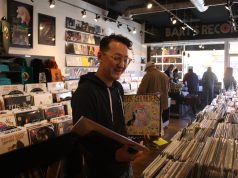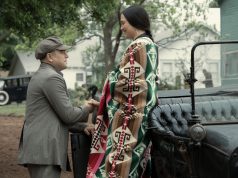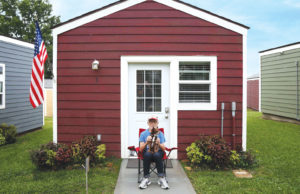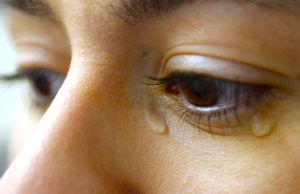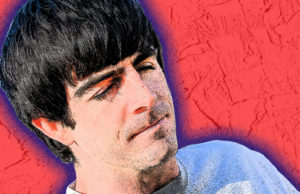Horne died at New York Presbyterian Weill Cornell Medical Center, a spokeswoman said. No cause of death was given.
Beginning as a 16-year-old chorus girl at the fabled
Cotton Club in Harlem in 1933, Horne launched a more than six-decade
career that spanned films, radio, television, recording, nightclubs,
concert halls and
As a singer, Horne had a voice that jazz critic
caressing, with its warm timbre and seductive drawl — honey and bourbon
with a teasing trace of lemon.”
She was, Heckman wrote, “one of the legendary divas
of popular music” — a singer who “belonged in the pantheon of great
female artists that includes
Horne, 80 at the time and cutting a new album, took a different view.
“Oh, please,” she said. “I’m really not Miss Pretentious. I’m just a survivor. Just being myself.”
When Horne first began dancing in the chorus at the Cotton Club — three shows a night, seven nights a week for
By the time she arrived in
She created a similar response performing at the Little Troc, a small club on the
Signed by
an era when no other blacks were under long-term contracts at the major
movie studios, Horne went on to become one of the best-known
African-American performers in the country.
With her copper-toned skin, strong cheekbones and dazzling smile, she was a breakthrough on the silver screen — “
“I was unique in that I was a kind of black that
white people could accept,” Horne once said. “I was their daydream. I
had the worst kind of acceptance because it was never for how great I
was or what I contributed. It was because of the way I looked.”
Refusing to play maids and other stereotypical roles
offered to black actors at the time, Horne appeared in a nonspeaking
role as a singer in her first
That set the tone for most of her screen appearances
in the ’40s, a time in which she appeared in more than a dozen movies,
including “I Dood It,” “Swing Fever,” “Broadway Rhythm” and “Ziegfeld
Follies.”
In most of them, she had only cameos as a singer,
who was typically clad in a glamorous evening gown and singing while
leaning against a pillar. It became her on-screen trademark.
“They didn’t make me into a maid, but they didn’t
make me into anything else either,” she wrote in “Lena,” her 1965
autobiography. “I became a butterfly pinned to a column singing away in
Movieland.”
Horne’s musical numbers usually were shot
independent of the films’ narratives, making them easy to be deleted
when screened in the Jim Crow South.
Two exceptions were the all-black musicals in which she was one of the stars: “Cabin in the Sky” and
Her memorable rendition of
A World War II pinup girl, the glamorous Horne in 1944 became the first black to appear on the cover of a movie magazine,
“Anybody who was not madly in love with
“In the history of American popular entertainment, no woman had ever looked like
“The Horne demeanor — distant and aloof — suggested
that she was a woman off somewhere in a world of her own …. who
appeared as if all her life she had been placed on a pedestal and
everything had come easily to her. That was the way she appeared to be.
… The reality was another matter.”
She was born
Her family lived in the home of her father’s middle-class parents in
where Horne’s grandmother was active in the Urban League, the National
Association for the Advancement of Colored People and the women’s
suffrage movement.
Horne’s father left his wife and daughter when Horne
was 3. And her mother, unhappy living with her strong-willed
mother-in-law, soon moved out to pursue an acting career with a
Harlem-based black stock company.
That left young Lena in the care of her grandparents until she joined her mother on the road in the South a few years later.
Horne was living in Harlem with her mother and her
out-of-work stepfather when she left school at 16 and joined the chorus
at the Cotton Club in 1933.
While continuing to work at the club, she made her
Leaving the Cotton Club in 1935, she became a
featured singer in the all-black Noble Sissle Society Orchestra but
quit two years later to marry
At 19, she settled into domestic life in
Although Horne gave up show business when she
married Jones, money problems during the marriage prompted her to
accept the co-starring role in “The Duke Is Tops,” a low-budget, 1938
black movie musical shot in 10 days.
She also appeared in “
Moving back to
after her marriage broke up, Horne was hired as a vocalist with the
Barnet Orchestra, becoming one of the first black performers to sing
with a major white band, with whom she had a hit record, “Good for
Nothing Joe.”
After leaving the Barnet band in 1941, Horne began
an extended engagement at Cafe Society Downtown, where she first met
and became friends with singer-actor and political activist
While under contract to
Fearing public reaction when they married in
Horne later said she initially became involved with Hayton because she thought he could be useful to her career.
“He could get me into places no black manager could,” she told
in 1981. “It was wrong of me, but as a black woman, I knew what I had
against me.” But, she said, “because he was a nice man and because he
was in my corner, I began to love him.”
But being married to a white man, whom she once said
“taught me everything I know musically,” took a toll — from her
impatience with black critics who questioned the marriage to her
sometimes using her husband as a “whipping boy” and making him “pay for
everything the whites had done to us.”
Horne’s last film for
Primarily due to her friendship with Robeson and her
involvement with the Council for African Affairs and the Hollywood
Independent Citizens Committee to the Arts, Science and Professions,
both of which were named as Communist fronts, Horne found herself
blacklisted and unable to appear on radio and television in the early
’50s.
But the cabaret business remained untouched by the blacklist, and she focused on her critically acclaimed nightclub/cabaret act.
Her “
Horne, who was able to resume appearing on television in 1956, also starred in the hit
Unable to stay in many of the hotels she performed
in because she was black, Horne developed what she later described as
“a toughness, a way of isolating” herself from the audience as a
performer.
“There was no cuteness or coyness about her,” comedian
In Her Own Voice.” “Lena came out there and stuck it right in their
face — boom! She was radiantly and subtly brazen, saying to herself,
‘You want to take me to bed, but you won’t let me come in the front
door.’ “
Throughout her early career, Horne experienced the injustices suffered by African Americans at the time.
While touring with the USO during World War II, she was expected to entertain the white soldiers before the blacks.
A day after performing for white soldiers in a large auditorium at
But when she discovered that the whites seated in
the front rows were German prisoners of war, she became furious.
Marching off the platform, she turned her back on the POWs and sang to
the black soldiers in the back of the hall.
Horne’s long-suppressed anger over the treatment of
blacks in white society erupted in 1960 when she overheard a drunken
white man at the Luau restaurant in
Jumping up, she threw an ashtray, a table lamp and several glasses at him, cutting the man’s forehead.
When reports of her outburst appeared in newspapers
around the country, Horne was surprised at the positive response,
mostly from African Americans.
“Phone calls and telegrams came in from all over,”
she told the Christian Science Monitor in 1984. “It was the first time
it struck me that black people related to each other in bigger ways
than I realized.”
In the early ’60s, Horne became more active in the
civil-rights movement, participating in a meeting with prominent blacks
in 1963 with then-Attorney General
In the early ’70s, Horne faced three personal blows
within an 18-month period: In 1970, the same year her father died, her
son died of kidney disease; and her husband died of a heart attack in
1971.
Horne later said she “stayed in the house grieving” until
She also toured with
Then, in 1981, she made a triumphant return to
Then 63, Horne went on to win the Drama Desk Award and a special Tony Award for her autobiographical show that ran on
Her rendition of “Stormy Weather” was, naturally, a show stopper.
She actually sang the song twice, first as she had
in the movie when she was in her 20s and, she said in an interview, she
couldn’t sing it “worth a toot.”
Then, at the end of the show, she electrified her
audience by singing it again from the perspective of a woman in her
60s, who had experienced a lifetime of love and misery.
As Horne said in the documentary “
In Her Own Voice”: “My life has been about surviving. Along the way I
also became an artist. It’s been an interesting journey. One in which
music became first my refuge and then my salvation.”
Horne was a Kennedy Center Honors recipient in 1984,
and she received a lifetime achievement award from the National Academy
of Recording Arts and Sciences in 1998.
———
(c) 2010, Los Angeles Times.
Visit the Los Angeles Times on the Internet at http://www.latimes.com/
Distributed by McClatchy-Tribune Information Services.


